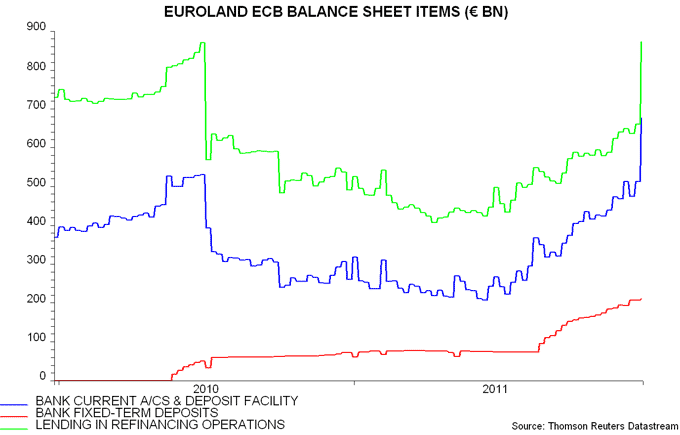High ECB reserves are not evidence of bank "hoarding"
The ECB’s weekly balance sheet statement shows that its conventional lending to the banking system (i.e. in refinancing operations, excluding “emergency liquidity assistance”) expanded by €214 billion or 32% between Friday 17 December and Friday 23 December. The €489 billion taken up in last week’s three-year LTRO, in other words, was offset by a repayment of €275 billion of shorter-term borrowing.
The main counterpart to the lending expansion on the liabilities side of the balance sheet was a €165 billion or 32% rise in bank reserves (i.e. balances in current accounts and the overnight deposit facility) to a record €677 billion – 28% higher than the previous peak of €529 billion reached in June 2010.
According to some media reports, the high level of reserves – specifically the €412 billion deposited in the overnight facility at the end of last week – indicates that banks are “hoarding” liquidity injected by the ECB rather than lending to each other and the wider economy. This is wrong. While an individual bank can reduce its reserves by lending or buying assets, this is not true for the system as a whole – the cash is simply transferred to other banks (i.e. the institutions where the recipients of the lent funds or the sellers of the assets hold their accounts). Aggregate reserves can be reduced only by official actions – either the ECB taking steps to drain liquidity (e.g. restricting lending at refinancing operations or issuing bills / term deposits) or governments building up cash at the ECB by issuing more debt than needed to fund budget deficits.
The surge in reserves, therefore, is simply the counterpart of last week’s lending operation and carries no implication about current or future bank behaviour.


Reader Comments